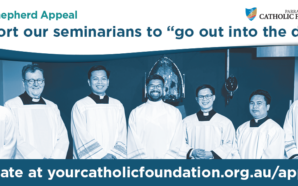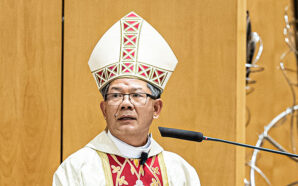Filipino Catholics are passionate about their faith, which is the most important part of their heritage.
“Filipinos are defined by their faith, culture and song,” Fr Ruben said.
Fr Ruben Elago is Chaplain to the Filipino Chaplaincy. He is a member of the Mission Society of the Philippines, which supports priests and seminarians in service to Filipinos abroad.
He has worked in the Philippines and Indonesia, completed a Licentiate and studied towards a doctorate in Rome, was Father Moderator of the Mission Society of the Philippines, as well as Rector of their Seminary.
The Filipino Chaplaincy has been one of the largest ethnic chaplaincies in the Diocese of Parramatta since its beginning in 1981.
“They are known to be able to be quick adaptors to any community they join,” he said.
The Philippines has a uniquely Catholic history in Asia and is the third largest Catholic country in the world. Filipino culture is Christianised in many ways and the large number of Filipino expatriates and emigrants bolster the faith around the world, including Australia.
In 1521, Ferdinand Magellan arrived in the Philippines, as an explorer for the Kingdom of Spain. He successfully converted the Chief Humabon of Cebu to the Catholic Faith, who was baptised by the expedition’s Chaplain Fr Pedro Valderrama. Magellan gifted the statue of Santo Niño, the Holy Child, to the Chief’s Queen.
Millions celebrates the Feast of Santo Niño de Cebu, especially in Cebu City. The Filipino Chaplaincy celebrates each year at Good Shepherd Parish, Plumpton. It is organised by the Cofradia del Santo Niño de Cebu.
This year marked 27 years of the colourful and exotic feast of Santo Niño de Cebu in the parish.
The celebrations in Cebu city span nine days and contain processions with many forms of traditional dance.
RELATED: Celebration of Our Lady of Peñafrancia on the Nepean River
Parents and children at Good Shepherd participate in sinulog, a striking ritual prayer-dance, where all participants carry a small statue of the Child Jesus and dance in honour of Him.
At the conclusion of the sinulog, the group holds up statues of the Infant Jesus and receives a blessing. This year the Papal Nuncio gave the blessing.
Another uniquely Filipino events include the Easter Morning celebration of Salubong, which is an Easter Sunday morning procession celebrating the meeting of Blessed Virgin Mary and the Risen Christ. Flores de Mayo in May honours the Blessed Virgin Mary. Another is Simbang Gabi, which is a series of nine dawn Masses leading up to Christmas Day.
The Filipino Chaplaincy also has fiestas and special celebrations for the Solemnity of St Joseph, Spouse of the Blessed Virgin Mary, the Feast of Our Lady of Penafrancia and All Souls Day.
These celebrations and parties elevate the pleasures of social life to follow the seasons of the liturgical calendar and in turn to the supernatural.
Each week there is a Mass in Tagalog, the Filipino language. This rotates between Holy Spirit Parish, St Clair, St Paul the Apostle Parish, Winston Hills, Our Lady of the Way Parish, Emu Plains and Mary, Queen of the Family Parish, Blacktown.
“Liturgical music in liturgy is an essential element of Filipino Catholicism,” Fr Ruben said.
“Generally our expression will be an extension of the practice in the Philippines. This is slowly however changing as we integrate into the Australian Catholic practices.”
Fr Ruben said that the gathering of Filipino clergy from Australia and New Zealand maintains that the Mass in the Filipino language is important to living out the Catholic Faith since people feel close to it and language is a repository of culture. Language, faith and culture are intertwined with each other, he said.








